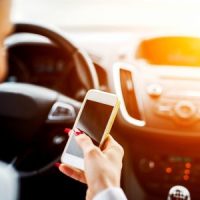Understanding Distracted Driving Risks And Legal Rights After An Accident

Now more than ever, distracted driving is a shockingly common safety risk on the Seattle area’s roads and highways. The widespread use of cell phones and smartphones has contributed significantly to the rise in distracted driving crashes, but there are a number of other ways drivers can engage in distracted driving – sometimes without realizing it. Unfortunately, the consequences of these mistakes can be tragic or even fatal.
An estimated 3,000 traffic fatalities are caused by distracted driving each year, according to the National Highway Traffic Safety Association (NHTSA). Over 400,000 non-fatal injuries occur each year as well, highlighting the risks involved for anybody on the roads. Using phones while driving is one of the more obvious examples of distracted driving, the NHTSA defines distracted driving as any activity that diverts one’s attention from driving.
Common examples of distracted driving in Washington include:
- Talking, texting, and using social media or apps on a phone;
- Fiddling with a radio or touchscreen display;
- Eating or drinking;
- Smoking;
- Personal grooming such as styling hair or makeup;
- Interacting with other passengers and taking eyes off the road;
- Reaching or moving items within the vehicle.
Unfortunately, it is all too easy to make the mistake of inattentive driving while we are distracted with something else. Our lives are filled with distractions and things that demand our attention anywhere we go, and sometimes the car is no different. However, people must remember that vehicles moving at any kind of speed can be a dangerous or even deadly threat to others on the road, or near the road.
Washington State’s Laws on Distracted Driving
Holding a phone while driving is against the law in the State of Washington. Cell phone use is permitted if a driver is using a hands-free Bluetooth device, if they are parked, or if they are calling for emergency assistance. Washington’s Traffic Safety Commission is vigilant about educating drivers on the dangers of distracted driving. They estimate that 30% of traffic fatalities in Washington are currently connected to distracted driving. Further, drivers become 3 times more likely to crash their cars when they are talking on a phone. Even a momentary distraction behind the wheel can have tragic consequences at any time.
Distracted Driving and Negligence in a Personal Injury Case
Distracted drivers that cause car crashes will often face traffic citations or even criminal prosecution based on the circumstances. They can also be held liable in a court of law for their negligence in a personal injury lawsuit. Victims of distracted drivers have a right to sue for damages if their injuries were caused by an inattentive driver. It is simply a matter of fairness.
All drivers take on a duty to protect themselves and others when they get behind the wheel and drive on a public road or highway. Failure to exercise reasonable care – which includes paying attention to the road at all times – can lead to legal liability for a driver that didn’t follow that standard of care.
Our Seattle Car Accident Attorneys Are Here to Help After a Distracted Driving Accident
A car accident is one of the more shocking and traumatic experiences a person can go through. The anguish is made worse when it is caused by something as senseless as distracted driving. After a distracted driving incident, you or your loved ones have important legal options to consider and a potential right to compensation from the at-fault driver.
Our skilled Seattle car accident attorneys at the Emerald Law Group have helped guide others to fair results and financial compensation after a devastating car accident. To learn more about your legal rights, please visit our firm online today or call for a free consultation at 206-823-0792.
Source:
nhtsa.gov/risky-driving/distracted-driving
